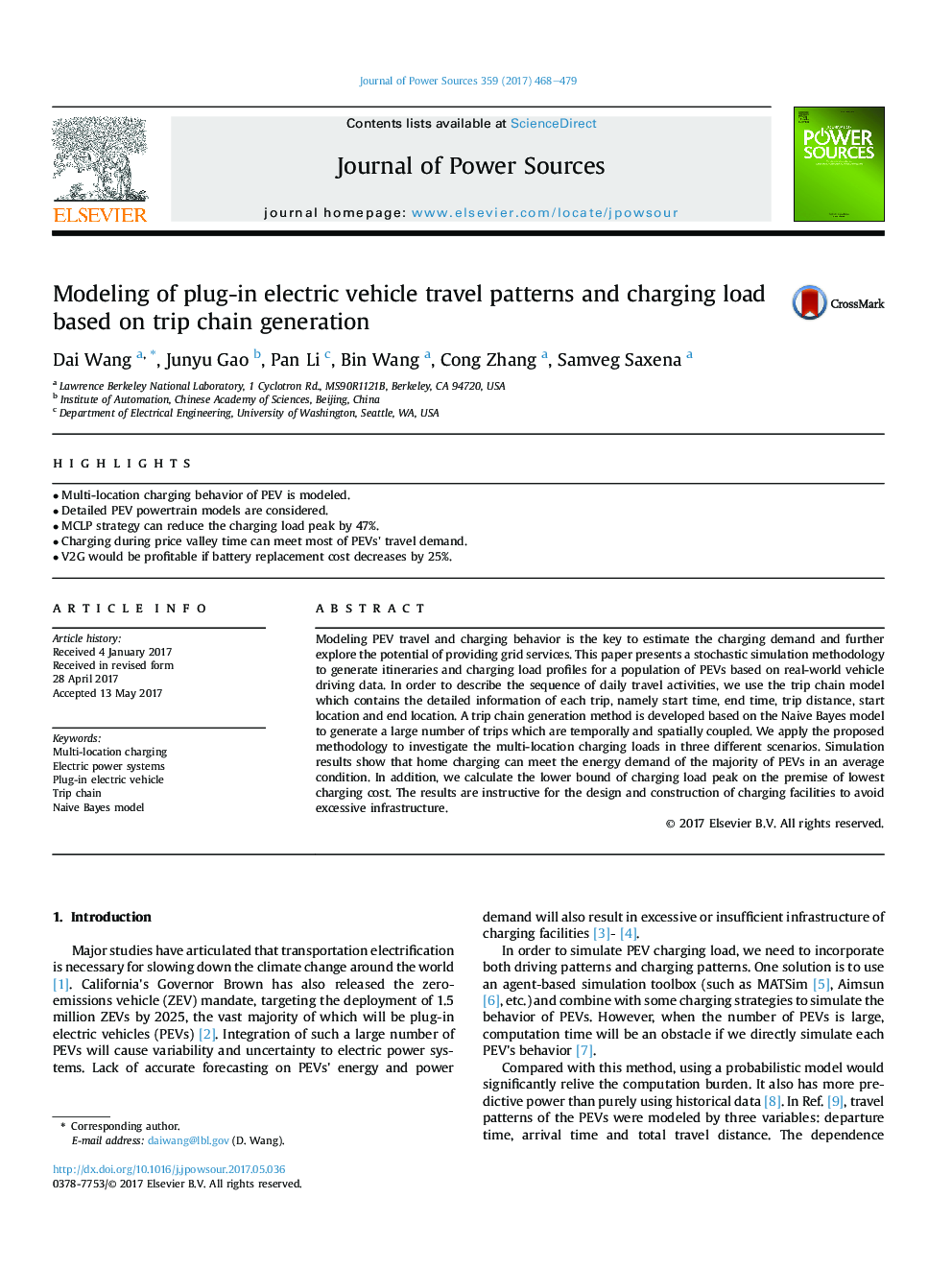| Article ID | Journal | Published Year | Pages | File Type |
|---|---|---|---|---|
| 5149065 | Journal of Power Sources | 2017 | 12 Pages |
Abstract
Modeling PEV travel and charging behavior is the key to estimate the charging demand and further explore the potential of providing grid services. This paper presents a stochastic simulation methodology to generate itineraries and charging load profiles for a population of PEVs based on real-world vehicle driving data. In order to describe the sequence of daily travel activities, we use the trip chain model which contains the detailed information of each trip, namely start time, end time, trip distance, start location and end location. A trip chain generation method is developed based on the Naive Bayes model to generate a large number of trips which are temporally and spatially coupled. We apply the proposed methodology to investigate the multi-location charging loads in three different scenarios. Simulation results show that home charging can meet the energy demand of the majority of PEVs in an average condition. In addition, we calculate the lower bound of charging load peak on the premise of lowest charging cost. The results are instructive for the design and construction of charging facilities to avoid excessive infrastructure.
Related Topics
Physical Sciences and Engineering
Chemistry
Electrochemistry
Authors
Dai Wang, Junyu Gao, Pan Li, Bin Wang, Cong Zhang, Samveg Saxena,
